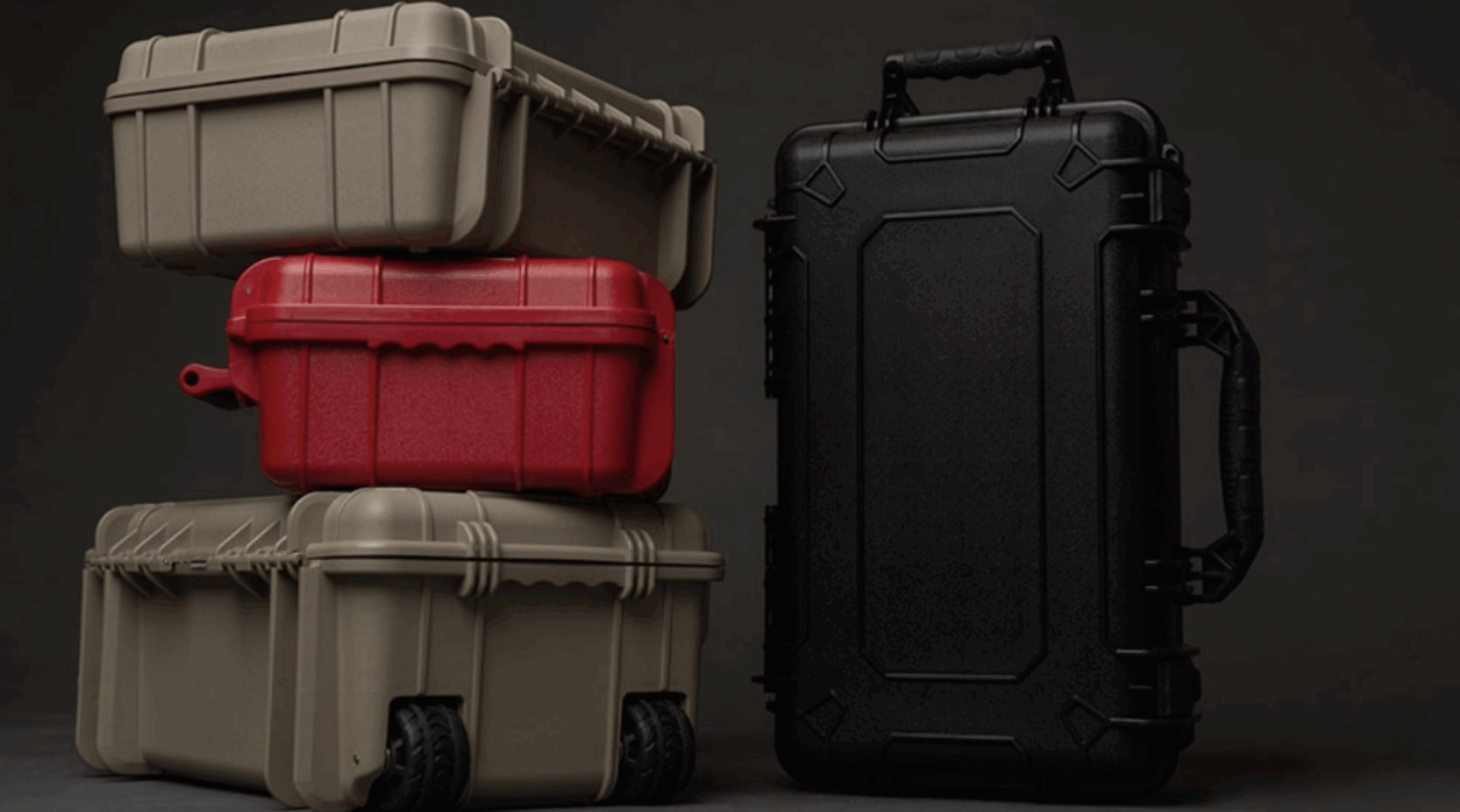Have you ever wondered how the right tool protection strategy could transform your workplace safety and efficiency? In today’s fast-paced industrial environment, protecting valuable tools isn’t just about preventing damage—it’s about safeguarding your team’s productivity and well-being.
Modern workplaces are revolutionizing their approach to tool safety through innovative storage solutions, ergonomic designs, and smart protective features that shield equipment from harm and enhance overall operational efficiency.
Prioritizing Protection for Tools and Time
The stakes in workplace safety couldn’t be higher. According to Occupational Safety and Health Administration (OSHA) data, there were 5,283 fatal work injuries in the United States, equating to 3.5 fatalities per 100,000 full-time equivalent workers.
The construction industry remains one of the deadliest sectors, accounting for approximately 19% of all U.S. workplace fatalities in 2025. This disproportionate risk highlights the urgent need for robust safety measures to protect workers and reduce fatalities.
Proper tool protection is essential for preserving valuable equipment and safeguarding workers’ well-being.
Safe Tool Storage: Minimizing Risks and Maximizing Efficiency
Safe tool storage stands as a critical factor in workplace safety and productivity. Investing in reliable and durable protection for valuable equipment reduces the risk of damage, loss, or malfunctions that can lead to costly delays or dangerous situations on-site.
Professional-grade custom hard cases provide exceptional defense against impacts, moisture, dust, and other hazards, ensuring that tools remain in optimal condition and ready for action when needed.
Here’s how strategic protection benefits your workplace:
- Prevents costly equipment damage during transport and storage
- Reduces project delays from tool-related incidents
- Extends the lifespan of valuable tools and gear
- Creates organized storage systems for quick access
- Maintains tool calibration and accuracy
Ensuring that tools are well-maintained and securely stored helps prevent accidents caused by faulty or damaged equipment, directly contributing to a safer and more efficient work environment.
Advancing Safety Through Physical Design
Enhancing workplace safety through thoughtful physical design is a crucial strategy for preventing accidents and protecting workers across various industries.
From manufacturing floors and warehouses to maintenance facilities and offices, well-designed physical environments reduce hazards, safeguard tools and equipment, and promote efficient, safe workflows.
Physical design improvements focus on modifying the workplace environment to reduce risks and human error by:
Ergonomic and Secure Tool Storage
Providing custom-fit, durable storage solutions helps protect tools from damage and prevent cluttered workspaces.
Keeping equipment secure and organized minimizes trip hazards and ensures tools perform reliably, reducing the chance of accidents related to faulty equipment.
“Research indicates that 78% of workers believe a tidy environment enhances focus, while 83% say it boosts creativity.” — Lisa Copeland, CAPP, PMP, CUFM
Clear Work Zones and Layouts
Designing workflows and workstations that separate pedestrian areas from machinery or hazardous zones helps prevent collisions and injuries. Marked pathways, physical barriers, and controlled access points contribute to safer environments in factories, warehouses, and even offices.
Ergonomic Workstations and Equipment
Adjustable benches, anti-fatigue mats, and ergonomic tool holders reduce strain and repetitive motion injuries. Tools designed with user safety in mind help workers maintain control, lowering the risk of accidents.
Fall Prevention and Safe Access
While most commonly associated with construction, fall risks exist in multiple settings, including warehouses and maintenance facilities. Guardrails, non-slip surfaces, and safe ladder and scaffolding designs are essential across industries.
Technology-Enhanced Safety Features
Incorporating sensors, alarms, and real-time monitoring technologies can detect unsafe tool conditions or environmental hazards, providing proactive alerts to prevent incidents.
Training as a Cornerstone of Workplace Safety

Photo from Pexels by Kindel Media
A well-trained workforce makes the difference between adequate protection and potential hazards. Through consistent education and practice, workers develop the skills to handle equipment safely while maintaining peak performance.
Beyond basic tool operation, today’s safety training must address multiple aspects of workplace protection.
Here are the key components that create a strong foundation for workplace safety:
- Hands-on demonstrations of proper tool handling techniques
- Regular updates on safety protocols and emergency procedures
- Specific training for specialized equipment and high-risk operations
- Documentation and certification tracking for each worker
- Peer-to-peer mentoring programs for knowledge sharing
Personal protective equipment (PPE) plays a vital role alongside comprehensive training programs. Workers need clear guidance on selecting and maintaining their PPE, understanding how different protective gear works together, and recognizing when equipment needs replacement.
Daily toolbox talks and regular safety meetings help reinforce these practices, creating an environment where protection becomes second nature rather than an afterthought.
Impact of Physical Design on Safety and Efficiency
Physical design directly influences workplace safety outcomes by mitigating familiar workplace injuries spanning many sectors. For example:
- The “Focus Four” hazards (falls, struck-by, electrocutions, and caught-in/between events) account for a large share of fatalities in high-risk sectors. Still, they are also relevant risks in manufacturing and warehousing.
- Organized, secure tool storage reduces risks of trips, tool damage, and operational delays, saving time and helping maintain productivity.
- Ergonomic design reduces chronic injuries and fatigue, improving worker wellbeing and consistency.
Organizations prioritizing physical design improvements often see reductions in injury rates alongside cost savings from fewer accidents and less equipment downtime.
Why Invest in Physical Design Beyond Compliance?
Physical design is more than meeting regulations—it is a proactive investment in workforce safety, morale, and operational success. By emphasizing tool protection and safer environments, businesses across industries can protect their personnel and assets, fostering cultures of safety and efficiency.
| Organize. Streamline. Protect: Visual labeling or color-coded sections in tool storage systems can streamline workflow and reinforce safe handling procedures, especially on fast-paced job sites. |
Leveraging Smart Features to Minimize Risk
Integrating smart features driven by advanced technologies like artificial intelligence (AI), wearable devices, Internet of Things (IoT), and data analytics is revolutionizing workplace safety across industries.
These systems proactively identify, predict, and mitigate hazards, moving safety management from reactive responses to preventative action. Thus, risks are minimized and workers and equipment are protected more effectively than ever.
Below are some of the smart features that enhance safety:
AI-Powered Hazard Prediction and Monitoring
AI platforms analyze real-time data from workplace environments, safety reports, and sensor inputs to detect patterns indicating elevated risks. For example, AI-driven cameras can automatically spot unsafe behaviors (like missing protective gear) and alert supervisors instantly. This predictive capability helps prevent incidents before they occur, reducing injury rates and downtime.
Wearable Safety Technology
In real time, devices such as smart helmets, wristbands, biometric sensors, and exoskeletons monitor workers’ vital signs, fatigue levels, and environmental conditions. By detecting exhaustion, hazardous gas exposure, or physical strain early, these wearables enable prompt preventative interventions, improving worker health and safety.
Internet of Things (IoT) Connected Devices
Smart sensors embedded in equipment and facilities continuously track air quality, noise levels, equipment health, and other safety metrics. This connectivity facilitates immediate detection of hazards, such as gas leaks or machinery faults, allowing for rapid response and accident prevention.
Immersive Training Through Virtual and Augmented Reality (VR/AR)
VR and AR technologies provide realistic, risk-free simulations for safety training. Workers experience hazardous scenarios virtually, building skills and preparedness for emergencies without exposure to actual danger. Augmented reality overlays also assist in safe equipment handling during operations in real time.
Autonomous Robotics and Drones
Robots and drones perform inspections and hazardous tasks in dangerous or hard-to-access areas, reducing worker exposure to risks. Autonomous drones can gather reliable site data without harming personnel, while collaborative robots (cobots) assist human workers by reducing physical strain and repetitive injury risk.
| Why this matters: Integrating human-centered design into tool development isn’t just about comfort—it directly impacts injury prevention, long-term workforce health, and consistent output quality across demanding work cycles. |
Lasting Protection Matters
Workplace safety isn’t just about protecting tools—it’s about safeguarding lives and livelihoods in an environment where every moment counts.
Organizations can dramatically reduce workplace incidents by strategically implementing custom storage solutions, ergonomic designs, and smart safety features while maximizing efficiency.
The future of workplace safety lies in our ability to embrace innovative protection methods that go beyond basic compliance, creating a culture where safety consciousness becomes as natural as breathing.








